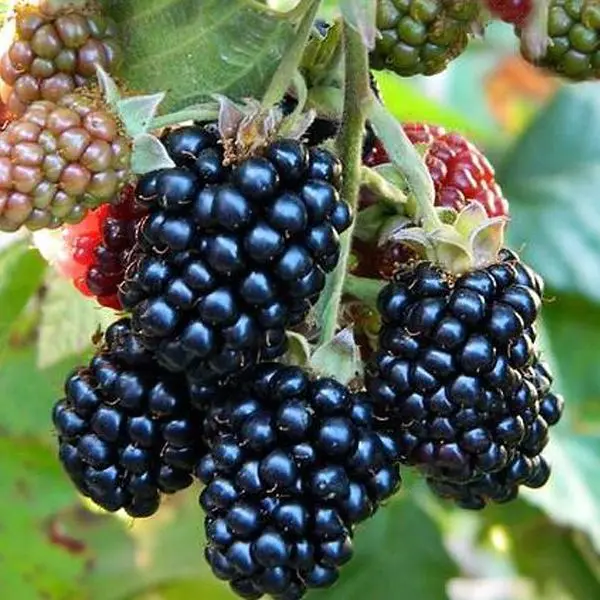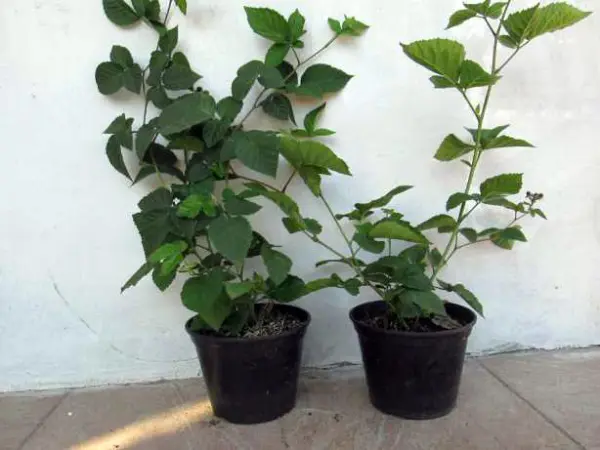Contents
Blackberry Jumbo is one of the new, but already very popular varieties of French selection. In just a couple of years, the berry won the great love of consumers and became the hallmark of the most exquisite garden. It cannot be said about culture that it is unpretentious – like any foreign hybrid, it needs certain conditions and care. But, despite this, many gardeners grow it for the sake of large berries with excellent taste and commercial qualities.
Description and characteristics of the variety
Jumbo (Jumbo) is a modern high-yielding hybrid, bred in France quite recently, so extensive data on its testing are not yet available. The first crop of this blackberry was grown in Ukraine, and, judging by the reviews, the description and characteristics of the berry fully correspond to the declared varietal indicators.

The Jumbo variety is mid-season – in warm regions, its ripening occurs in the second half of July, in the northern regions – at the beginning or middle of August. The fruiting period is long, stretched for 5–6 weeks, which allows you to enjoy delicious berries from mid to late summer, and even in September.
The jumbo blackberry bush is powerful, with great growth strength, but at the same time neat and compact. The shoots are thornless, semi-creeping type – erect at the base, at a height of 1,2–1,5 m they begin to bend down to the ground, so the installation of supports is necessary. Among all garden hybrids, Jumbo, perhaps, can be considered the most large-fruited – berries from those few crops that were obtained reached a mass of 25–30 g, which can be considered a kind of record.
In addition to their outstanding size, Jumbo berries also have an amazing sweet taste (10-12% sugar), with a barely noticeable sourness in the aftertaste. The surface of the drupes is glossy, black in color. The pulp is dense, very juicy, with small, not hard bones. The berries of this blackberry are resistant to damage (do not crumple, do not flow), in a cool place they can be stored for more than 7 days, they tolerate transportation over long distances well.

The yield of the variety is stable and high – with proper care, 20–25 kg of berries can be harvested from one bush. A positive feature of the blackberry is that it easily tolerates high temperatures and is resistant to droughts. The winter hardiness of the culture is average – even in a temperate climate, the bushes must be covered for the winter. In general, Jumbo blackberries are unpretentious, resistant to many diseases, and can bear fruit in any conditions.
Care Basics
Caring for Jumbo blackberries is not particularly different from caring for other garden varieties. The standard activities necessary for a culture for normal growth and fruiting include watering, loosening and weeding (in the absence of mulch), shaping and pre-winter pruning, periodic top dressing and shelter for the winter.
Blackberries of this variety love heat and sun, so the area where the bushes grow should be open to sunlight and protected from the winds. It is better to plant Jumbo blackberries on a slight elevation, as it tolerates drought much more easily than excessive moisture.
Although the variety is drought tolerant, plants need regular watering for maximum yield, especially during flowering and fruiting.

It is recommended to cover almost all garden blackberries for the winter with organic mulch, which serves not only as protection against frost, but also is an excellent top dressing during the long winter period. In this regard, additional fertilizers are rarely applied to blackberries – only when the soil is extremely depleted and the plants cannot develop normally.
If you notice that the bushes began to produce few new shoots, and the yield decreased, or the berries became small and not juicy enough, then additional top dressing is recommended: in spring, a nitrogen mixture (20–25 g) or humus (1–2 buckets for each bush), and in the summer, during the period of entry into fruiting – potash fertilizers (40-50 g / bush).
For the winter, Jumbo blackberries must be cut and covered. After the end of fruiting (mid- or end-September), all the old, fruit-bearing shoots in the current year are cut out at the root, leaving no stumps. If the bush was initially correctly formed on the trellis – the young shoots were directed in one direction, and the fruit-bearing ones in the other, then this procedure will not take you much time. If the bush grew chaotically, then it must be removed from the trellis, young and stiff shoots should be separated, after which the latter should be cut.

Next, you need to remove the extra (weak, thin) young shoots, leaving only 7–8 of the most powerful and strong branches – they will form a crop next year. The rest should also be cut at the root without regret, as they will create an additional load on the bush, which will lead to a decrease in the size of the berries and overall yield. The remaining young branches should be shortened by a quarter (about 20-40 cm), depending on the height.
When the bush is ready for shelter, the shoots are removed from the trellis, bent to the ground and covered with a thick scrap of mulch (peat, sawdust, foliage of barren trees, needles), as well as more dense material: film, roofing material, agrofiber.
Advantages and disadvantages
Describing the positive qualities of the Jumbo variety, it is necessary, first of all, to note the outstanding (up to 30 g) weight and size of the fruit. It is this indicator that distinguishes the hybrid from many other garden varieties, and for it the farmers and gardeners who grow it for sale so loved the berry.

Also, the advantages of blackberries include a number of qualities that put it at the level of the best varieties for garden and industrial cultivation:
- excellent taste;
- excellent trade dress;
- good transportability and safety of berries;
- drought and disease resistance;
- compact bushes – plants can be planted compactly on the site, which saves usable area;
- ease of care – due to the same compactness, the bushes are easily formed on the trellis, they are easier to cut;
- lack of thorns – for blackberries this quality is a big plus, since it greatly facilitates the care and harvesting;
- high productivity – due to the large size of the berries, as well as the fact that they are collected in multi-berry brushes, a high yield (up to 25 kg) can be harvested from one small bush;
- extended fruiting period (up to 6 weeks).
The disadvantages of the variety include, perhaps, low winter hardiness. Otherwise, all the technical and taste indicators of the berry are quite highly rated, and perhaps soon it will be able to replace some well-known, but less productive varieties of soda blackberries.
Video “Blackberry Variety Jumbo”
This video will introduce you to the Jumbo blackberry variety and tell you how this horticultural crop is grown in Belarus.









